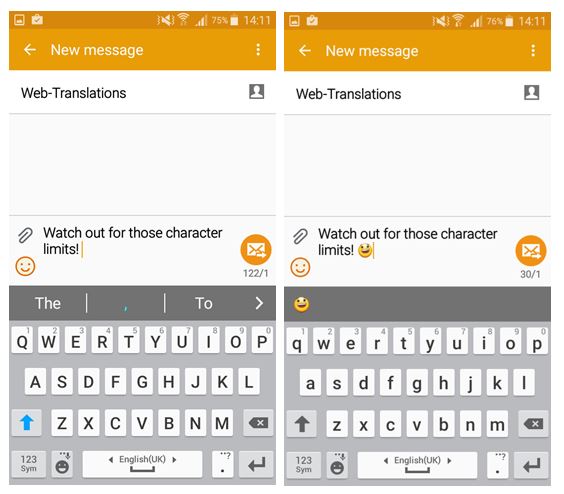Ever contemplated a multilingual marketing campaign that uses SMS messaging to contact your customers? Or simply wanted to practise a bit of French with your latest foreign speaking acquaintance? Then you may want to have a serious think about size. Because when it comes to texting, it really does matter.
As English speakers, we are lucky enough to be given a grand total of 160 characters per text message. These days, our mobile providers generally allow us to exceed these limits and will concatenate multiple messages into one long message, billing us for the equivalent number of messages. UK mobile networks use GSM encoding, which supports a character set consisting of the Latin alphabet, numbers, many other symbols, and some support for non-English accented characters. ‘Extended’ GSM character sets are also provided in some countries and offer additional characters, but this can vary depending on the mobile provider and handset. Often, using these characters will also subtract more than one character from your precious 160 character allowance. In fact, even using your favourite smiley or salsa dancing emoji will instantly convert your message to Unicode and reduce your character limit to 70. And if you send a special character to someone with an incompatible handset, which is tricky to know beforehand, it may simply appear as a ☐.
Our little smiley has cost us dearly 🙁
The real problem comes when working with languages that are incompatible with the GSM standard and must use UTF encoding. Languages such as Arabic, Chinese, Japanese and Cyrillic languages like Russian all use Unicode, and as a result are subject to the 70 character limit. This means that if localising text campaigns for these regions, it is important to bear in mind that you have a limited number of characters to play with. You may be able to use and send concatenated messages, but there is no guarantee that all mobile handsets handle these equally. The last thing you would want is for your customers to receive half a message, or a garbled message that has broken in transit. The safest option is therefore to ensure that your text fits within the character limit for one SMS message. If you don’t have space for all of your information, then you could consider directing your recipients to a shortened URL where they can access additional information.
In a throwback to our other recent post on how to write for translation, when planning a text campaign you must ensure that you know what your character restriction is, how many ‘special’ characters you need to use that could count for more than one character (€ is a common example), and whether you need to use any Unicode characters that will instantly reduce your character limit to 70.
If you are planning a multilingual SMS campaign and you’re not quite sure where to start, then feel free to get in touch for our advice.
11 May 2017 13:10
